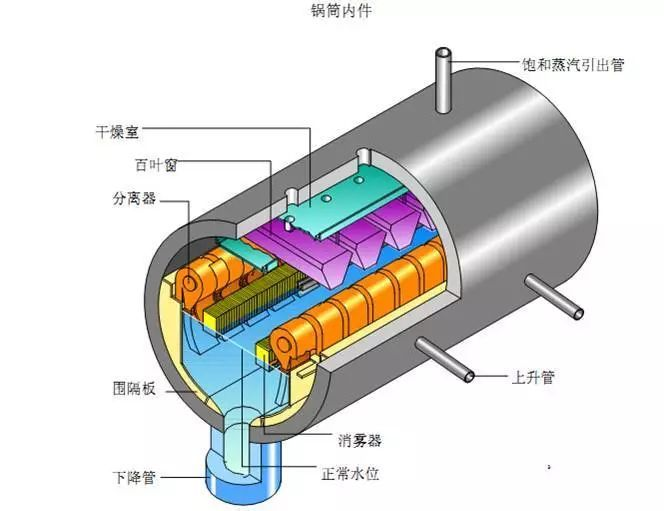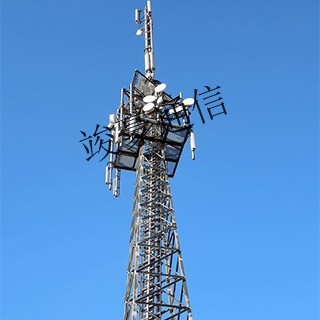Onboard Base Station: The Communication Hub of the Mobile World
1. Introduction

In daily life, many of us have experienced situations like driving on a remote mountain road, trying to check the route, only to find no mobile signal and unable to load the map, leading to anxiety. Or during natural disasters like floods, when communication facilities are destroyed, leaving us without signal and unable to contact the outside world, the feeling of helplessness and panic is overwhelming. These moments of communication breakdown not only inconvenience our lives but can also hinder rescue and emergency responses. The advent of onboard base stations aims to solve these problems. Acting as mobile communication fortresses, they provide crucial communication support in critical moments. But how do they achieve this? Let's delve deeper into onboard base stations.
2. What is an Onboard Base Station?

An onboard base station, as the name suggests, is a base station device installed on a vehicle, known in English as a Cell On Wheels (COW). Essentially, it functions like a traditional fixed base station, serving as a critical node in the communication network, but with the added advantage of mobility.
In the broader framework of communication networks, fixed base stations are like the building blocks of a communication infrastructure, installed at specific locations to provide stable coverage for surrounding areas. Onboard base stations, on the other hand, act as flexible communication "special forces," supplementing fixed base stations by providing temporary wireless coverage in special scenarios.
Imagine the communication network as a vast spider web, with the core network as the central hub responsible for managing and processing large amounts of data. Fixed base stations are like nodes distributed at key locations, connected to the core network via wired or wireless transmission mediums, relaying signals to surrounding areas, allowing mobile devices like phones and computers to access the network. Onboard base stations, when needed, quickly deploy to the scene, temporarily bridging communication gaps and extending signal coverage to ensure smooth communication in specific areas.
3. How It Works: A Technical Breakdown

The working principle of onboard base stations involves a series of sophisticated technologies. In terms of positioning, it primarily relies on signals from nearby base stations in the mobile communication network. As the vehicle moves, the onboard base station communicates with nearby base stations, measuring signal strength and time differences to accurately calculate its position, much like a precise mathematical calculation. This base station positioning method excels in urban environments, quickly determining the vehicle's location and providing a foundation for subsequent communication services.
In terms of communication, its workflow is similar to that of a wireless router. It uses 3G or 4G data cards to communicate with the operator's base stations, creating a high-speed communication channel with the outside world. The LTE-Fi device inside the vehicle plays a crucial role, acting as a signal conversion master, transforming the received signals into Wi-Fi signals, allowing passengers to connect their phones, computers, and other devices to the Wi-Fi network. For example, when we want to watch online videos in the car, the onboard base station retrieves the video data from the network and transmits it to our devices, enabling smooth video playback.
4. Advantages of Onboard Base Stations
Onboard base stations stand out among communication devices due to their significant advantages.
First, they offer high sensitivity and long transmission distances. In emergency rescue scenarios, such as post-earthquake mountainous areas, complex terrain can weaken or block signals. Onboard base stations use advanced technologies like COFDM and transceiver diversity, achieving a receiver sensitivity of -102dBm. In line-of-sight communication, they can reach up to 80km in air-to-ground or air-to-air scenarios and 50km in ground-to-ground scenarios. Even in non-line-of-sight environments like valleys, forests, or urban areas, they exhibit strong anti-multipath interference and diffraction capabilities, effectively overcoming obstacles to ensure signal transmission. For instance, during the 2020 Sichuan Liangshan forest fire rescue, onboard base stations enabled long-distance communication in complex mountainous terrain, allowing timely transmission of fire and rescue progress information, providing crucial support for rescue operations.
Second, they offer high transmission rates. Using technologies like COFDM, QPSK/16QAM/64QAM/256QAM adaptive modulation, and MIMO, they can achieve peak rates of 25+Mbps@10MHz, suitable for high-volume multi-hop transmissions. At large events like concerts or sports games, where many attendees simultaneously share photos and videos, the demand for network speed is extremely high. Onboard base stations can quickly process and transmit large amounts of data, ensuring smooth network sharing for attendees.
Third, they provide stable and reliable transmission. As distance increases, the transmission rate does not significantly drop, maintaining a relatively high and stable rate. In urban areas, even as the vehicle moves through areas with fluctuating signals like skyscrapers or tunnels, the onboard base station can still provide stable network services, allowing passengers to continue activities like video conferences or online learning without interruption.
Additionally, onboard base stations support large network scales. Using dynamic TDMA protocols, they can allocate time slots dynamically, supporting up to 16 nodes in a network. In scenarios like logistics or tourist convoys, multiple onboard base stations can form a large-scale network, enabling efficient communication between vehicles and command centers, facilitating unified dispatch and management.
Lastly, they support multiple relay hops and have strong automatic routing capabilities, expanding network coverage and enhancing the flexibility of self-organizing networks. In remote areas where large-scale fixed base station construction is impractical due to geographical constraints, onboard base stations can relay signals over long distances, providing basic communication services to local residents.
5. Application Scenarios
Onboard base stations have a wide range of applications, playing an indispensable role in many critical scenarios.
In emergency rescue scenarios, they serve as lifelines for communication. After natural disasters like earthquakes, floods, or fires, fixed communication infrastructure is often severely damaged, leading to communication breakdowns in affected areas. Onboard base stations can quickly respond, arriving at the disaster scene promptly. For example, during the 2021 Henan floods, where communication was paralyzed in many areas, telecom operators like China Telecom deployed onboard base stations to quickly establish temporary communication networks, enabling affected residents to contact the outside world and send求救 signals. This also allowed rescue command centers to monitor the disaster situation in real-time, scientifically allocate resources, and significantly improve rescue efficiency.
Vehicle mounted base stations also have important applications in public safety management. During large-scale events, such as hosting international events like the Olympics and World Cup, or major celebrations like National Day, large crowds gather, leading to an explosive growth in communication demand. Vehicle mounted base stations are deployed around the event site, effectively sharing communication pressure and ensuring smooth communication between the audience, staff, and security personnel, ensuring that the event can proceed safely and orderly. At the same time, in response to emergencies such as counter-terrorism operations and mass incidents, vehicle mounted base stations can provide stable communication support for on-site command and frontline law enforcement personnel, facilitating timely communication of instructions and collaborative operations.
In the industrial field, vehicle mounted base stations also demonstrate their capabilities. For some industrial production scenarios that require remote monitoring and management, such as oil pipeline inspections, mining operations, etc., vehicle mounted base stations can be installed on inspection vehicles or mining transport vehicles. In the inspection of oil pipelines, inspectors drive vehicles equipped with vehicle mounted base stations along the pipeline route, and transmit real-time operation data, video images, and other information of the pipeline back to the monitoring center through the vehicle mounted base stations. Once pipeline leaks, abnormal pressures, and other situations are discovered, the monitoring center can immediately respond and arrange maintenance personnel to handle them, greatly improving the safety and efficiency of industrial production.
In industries such as telemedicine and remote education, vehicle mounted base stations also provide strong support. In remote areas, medical and educational resources are relatively scarce. Through vehicle mounted base stations, remote medical experts can connect to medical institutions in remote areas in real time, conduct remote consultations for local patients, and guide the development of treatment plans; Distance education teachers can also engage in real-time interactive teaching with students from remote schools through vehicle mounted base stations, allowing students to enjoy high-quality educational resources and narrow the urban-rural education gap.
In addition, during the maintenance of telecommunications facilities, when a fixed base station in a certain area malfunctions and needs maintenance, and the maintenance period may cause communication interruption in that area, the vehicle mounted base station can temporarily replace the faulty base station to ensure uninterrupted communication services in that area and ensure that users' communication experience is not affected.
6. Future Development Trends
With rapid technological advancements, onboard base stations are continuously evolving, with vast potential for future development.
In terms of technological innovation, vehicle mounted base stations will be deeply integrated with cutting-edge technologies such as 5G, the Internet of Things, and artificial intelligence. The high-speed, low latency, and large connectivity characteristics of 5G technology will bring stronger communication capabilities to in vehicle base stations. Imagine in the future intelligent transportation scenario, vehicles can achieve high-speed and stable communication through 5G onboard base stations, exchanging real-time information such as driving speed, location, and road conditions, thereby achieving more accurate autonomous driving and traffic flow optimization. The intelligent infrastructure between vehicles and roadside can also exchange information through 5G vehicle mounted base stations. Vehicles can obtain information on changes in traffic signals in advance, adjust their driving speed reasonably, reduce parking waiting time, and improve road traffic efficiency.
The integration of IoT technology will make in vehicle base stations a key hub connecting vehicles with their surrounding environment. Vehicles can communicate with various IoT devices, such as parking monitoring devices in smart parking lots and smart charging stations. When the vehicle approaches the parking lot, the onboard base station can obtain real-time information on available parking spaces, guiding the driver to quickly find a parking spot; When the vehicle needs to be charged, it can automatically establish a connection with nearby charging stations to achieve intelligent charging management.
Artificial intelligence technology will make vehicle mounted base stations more intelligent. By analyzing and learning from a large amount of communication data, vehicle mounted base stations can automatically optimize communication parameters and improve communication quality according to different scenarios and requirements. In emergency rescue scenarios, artificial intelligence can help vehicle mounted base stations quickly determine the communication needs of disaster stricken areas, intelligently allocate resources, and ensure smooth communication between rescue command centers and on-site rescue personnel.
From the perspective of market demand, the market demand for vehicle mounted base stations is showing a rapid growth trend. With the continuous increase in people's demand for communication and the frequent occurrence of various emergencies, vehicle mounted base stations will play an increasingly important role in both urban and remote areas. In cities, large-scale events and the promotion of urban construction require vehicle mounted base stations to ensure temporary communication needs; In remote areas such as mountainous regions and islands, vehicle mounted base stations will become an important means of providing basic communication services. In addition, with the rapid development of industrial Internet, intelligent transportation and other industries, the demand for vehicle mounted base stations will continue to increase, which will provide a solid communication guarantee for the digital transformation of these industries.
7. Conclusion
Vehicle mounted base stations, which play a unique role in the field of communication, play a key role in emergency rescue, public safety, industrial production and many other scenarios due to their significant advantages such as high sensitivity, high speed, stability and reliability. They have become an important force in ensuring smooth communication. With the continuous development of cutting-edge technologies such as 5G, Internet of Things, and artificial intelligence, in vehicle base stations will also usher in new development opportunities, and their application scenarios will be more extensive and their functions will be more powerful.
In the future, we may see vehicle mounted base stations play a more central role in the construction of intelligent transportation and smart cities, bringing more convenience and security to our lives. So, let's pay attention to the development of in vehicle base station technology together, hoping that it will create more possibilities in the future and build a more intelligent and efficient communication world for us.




